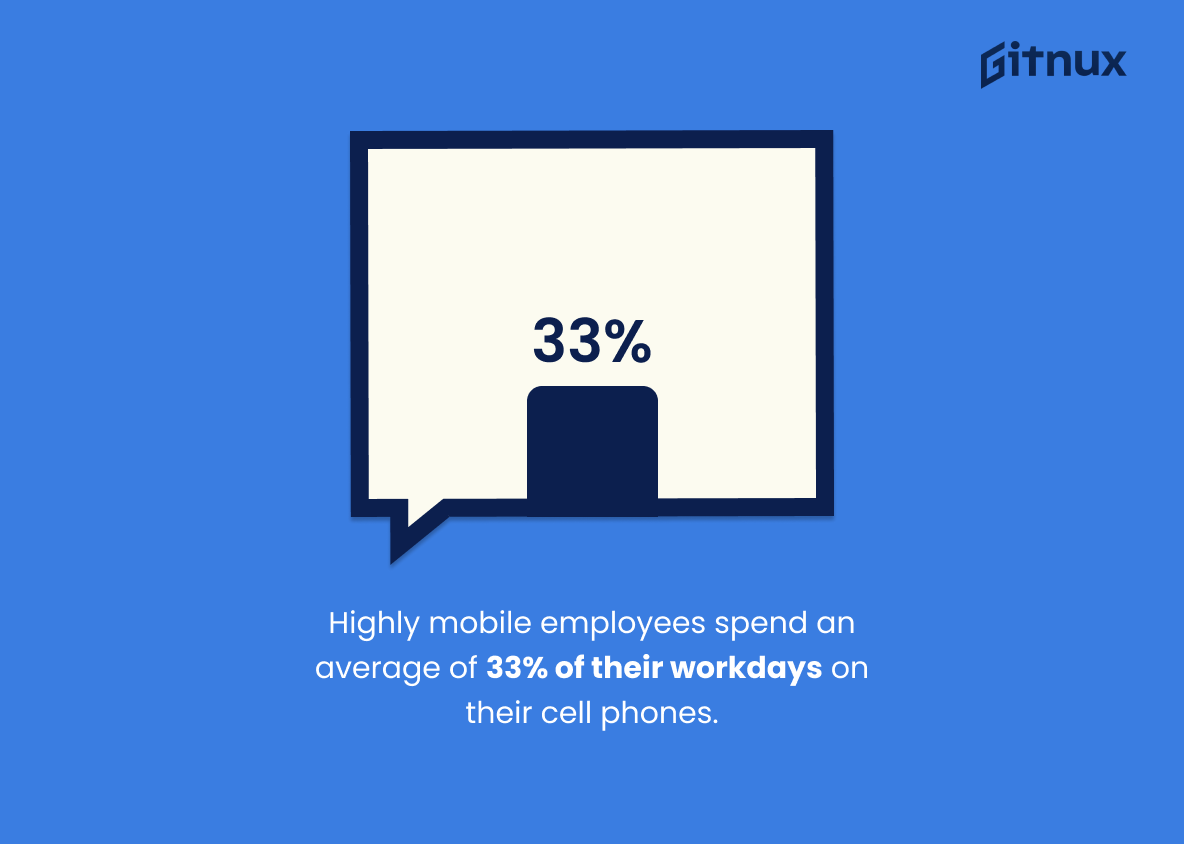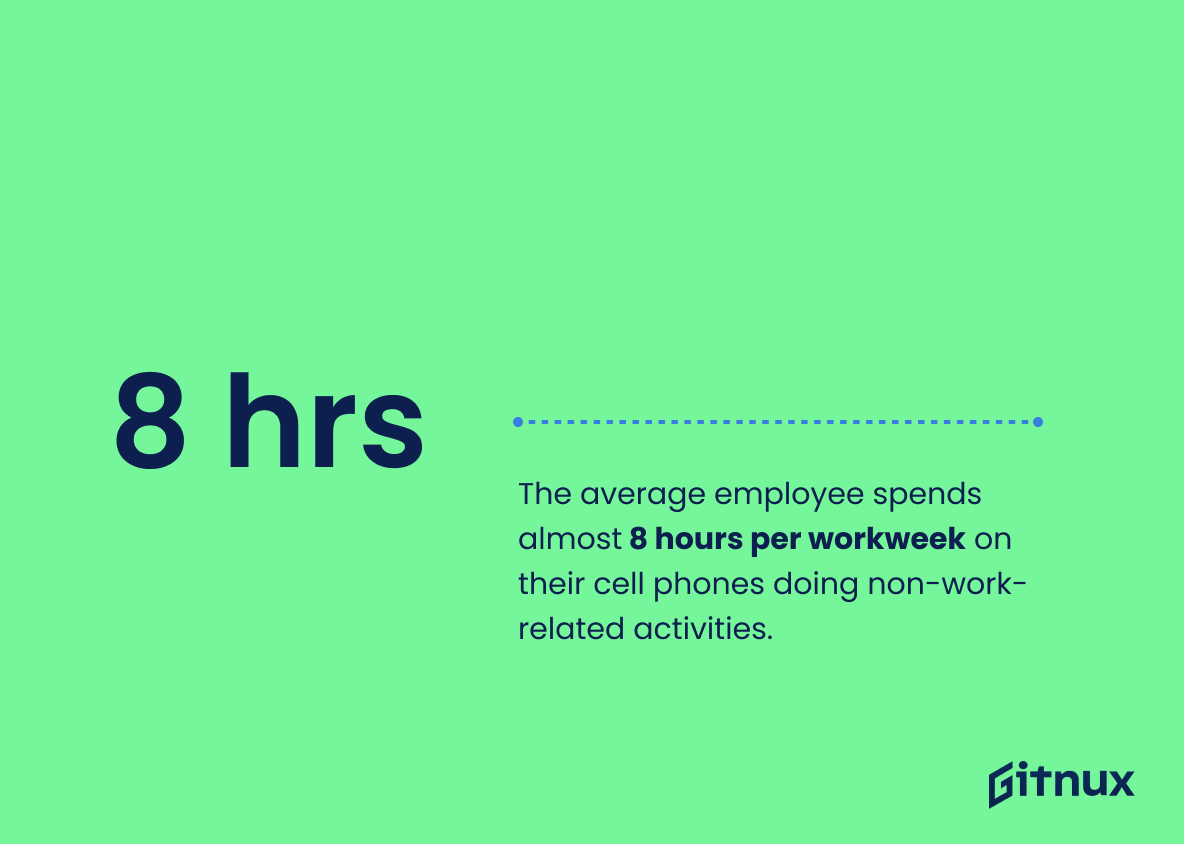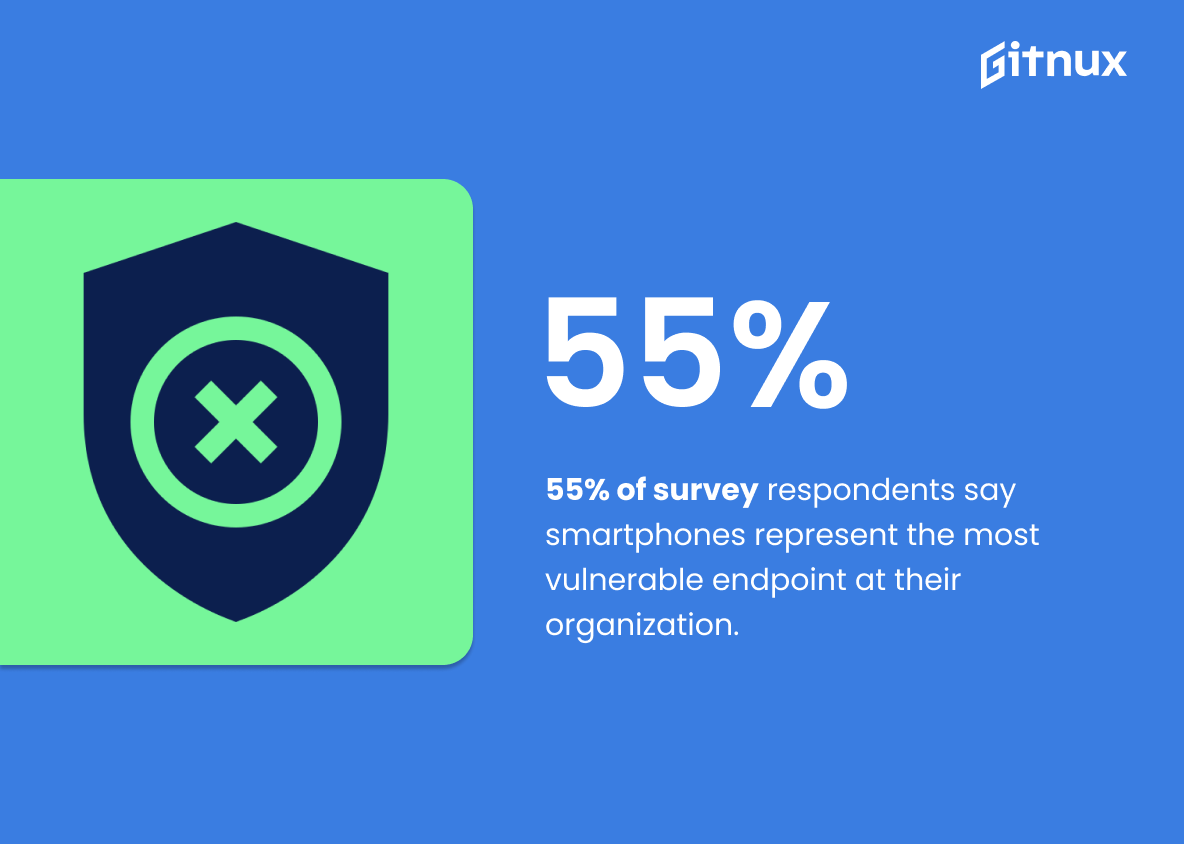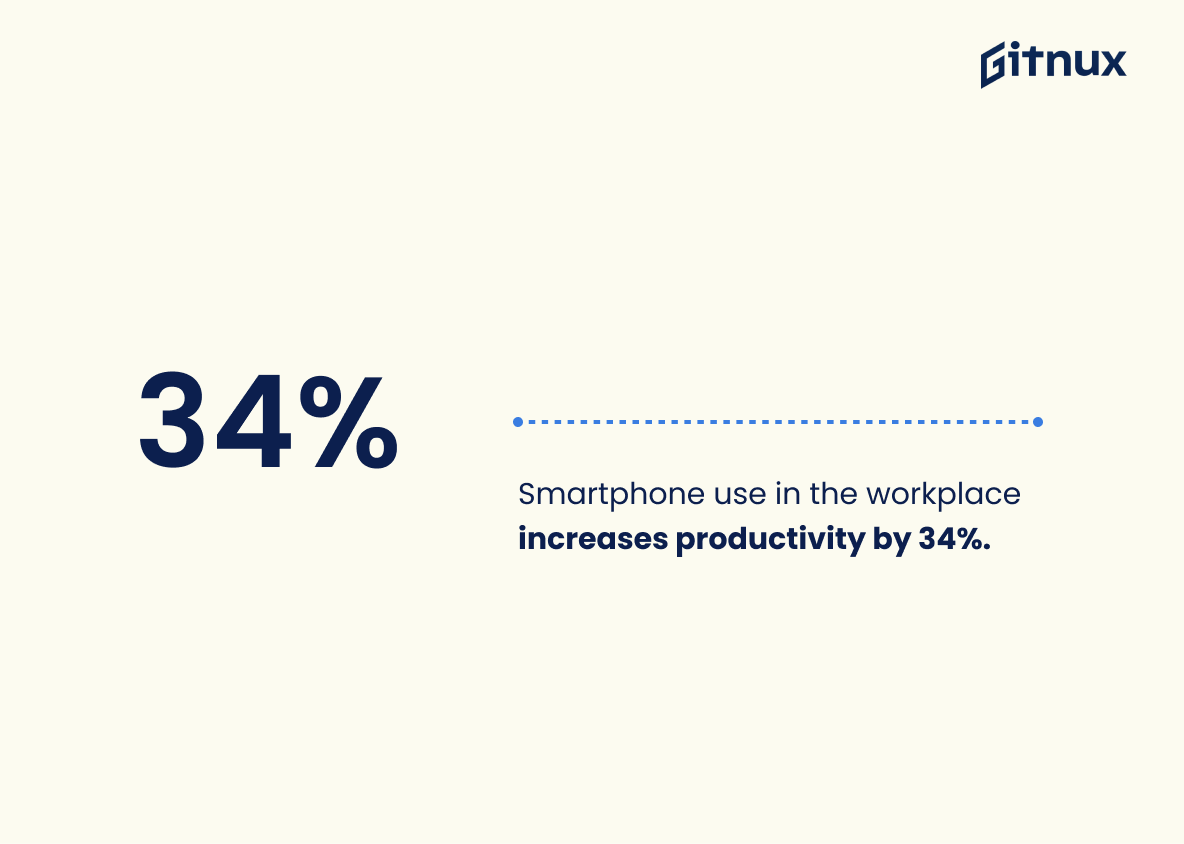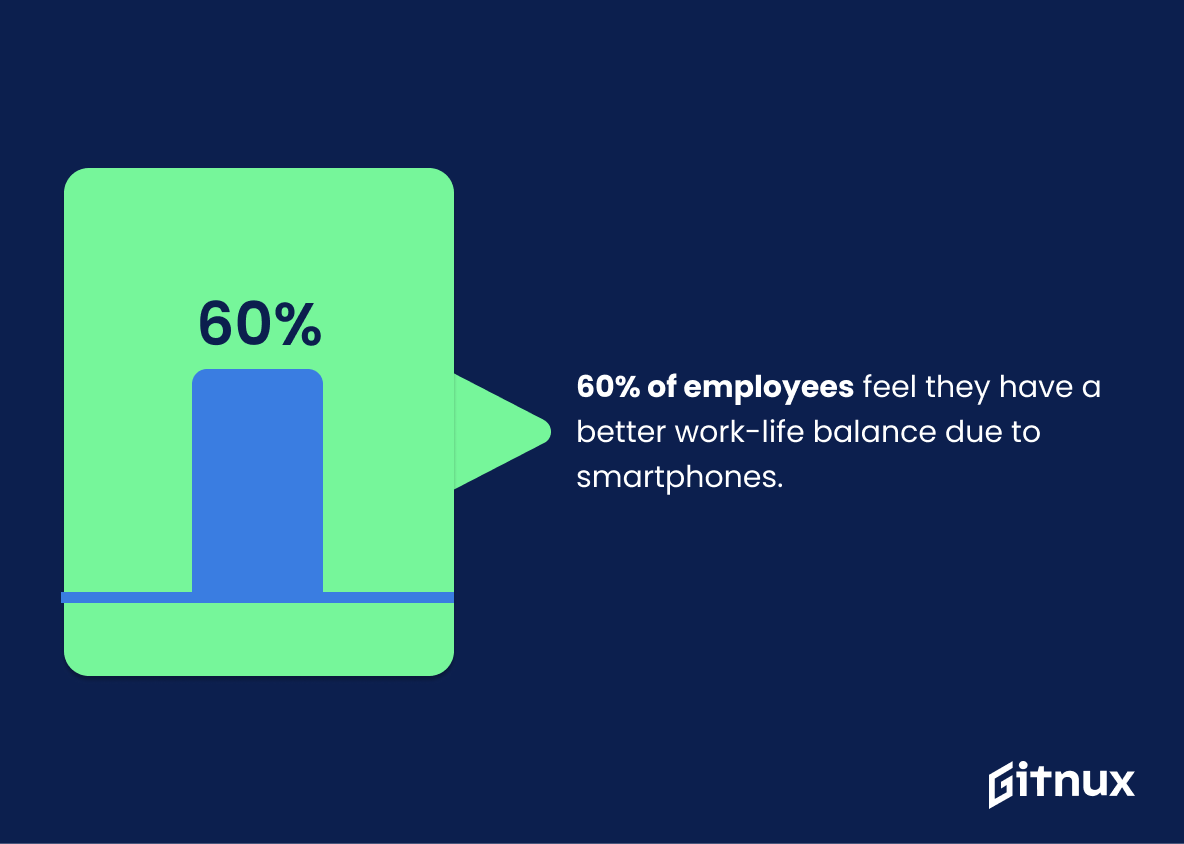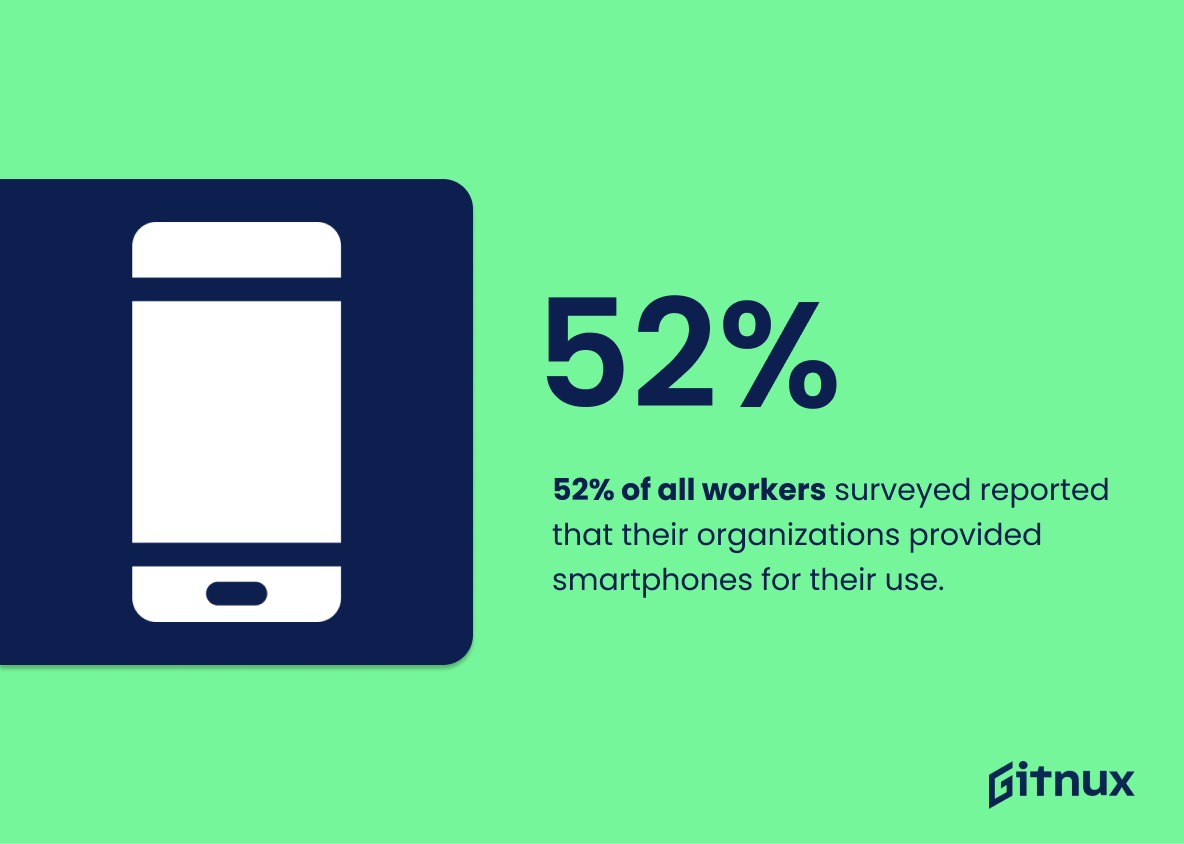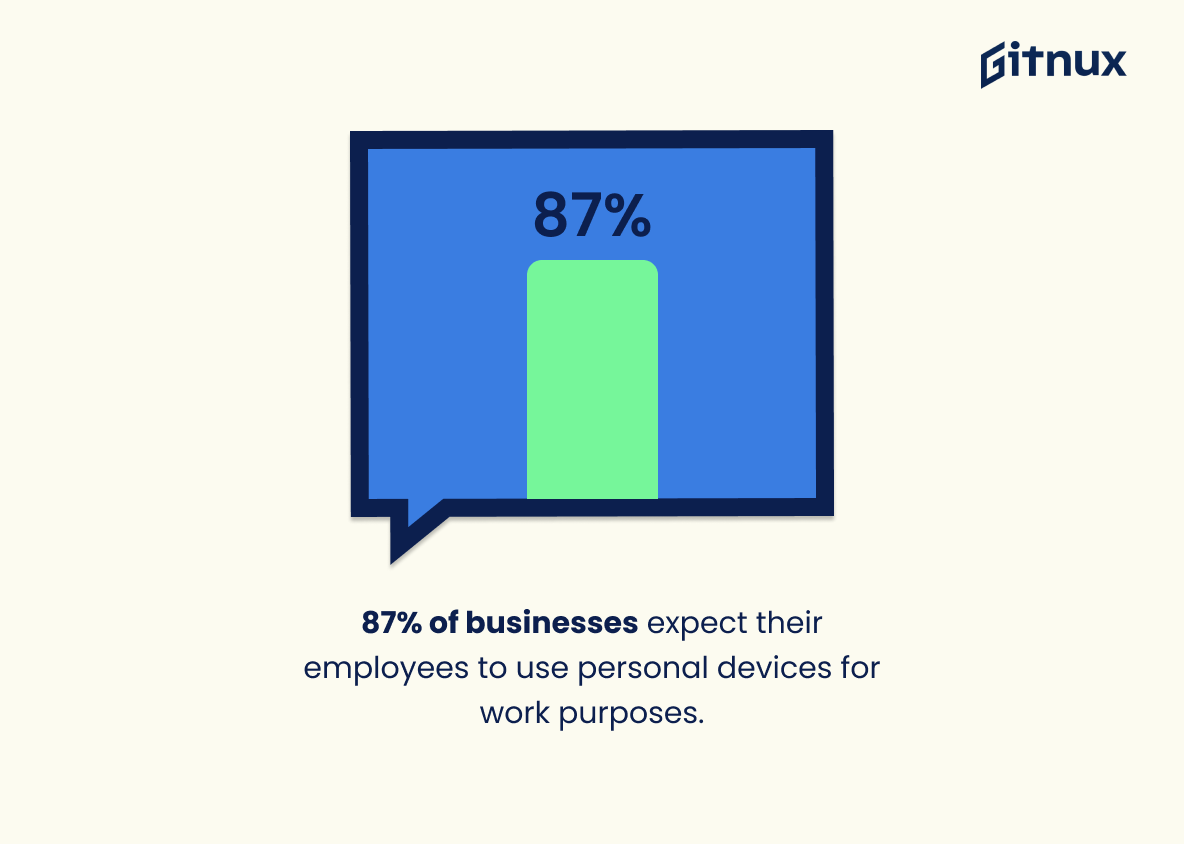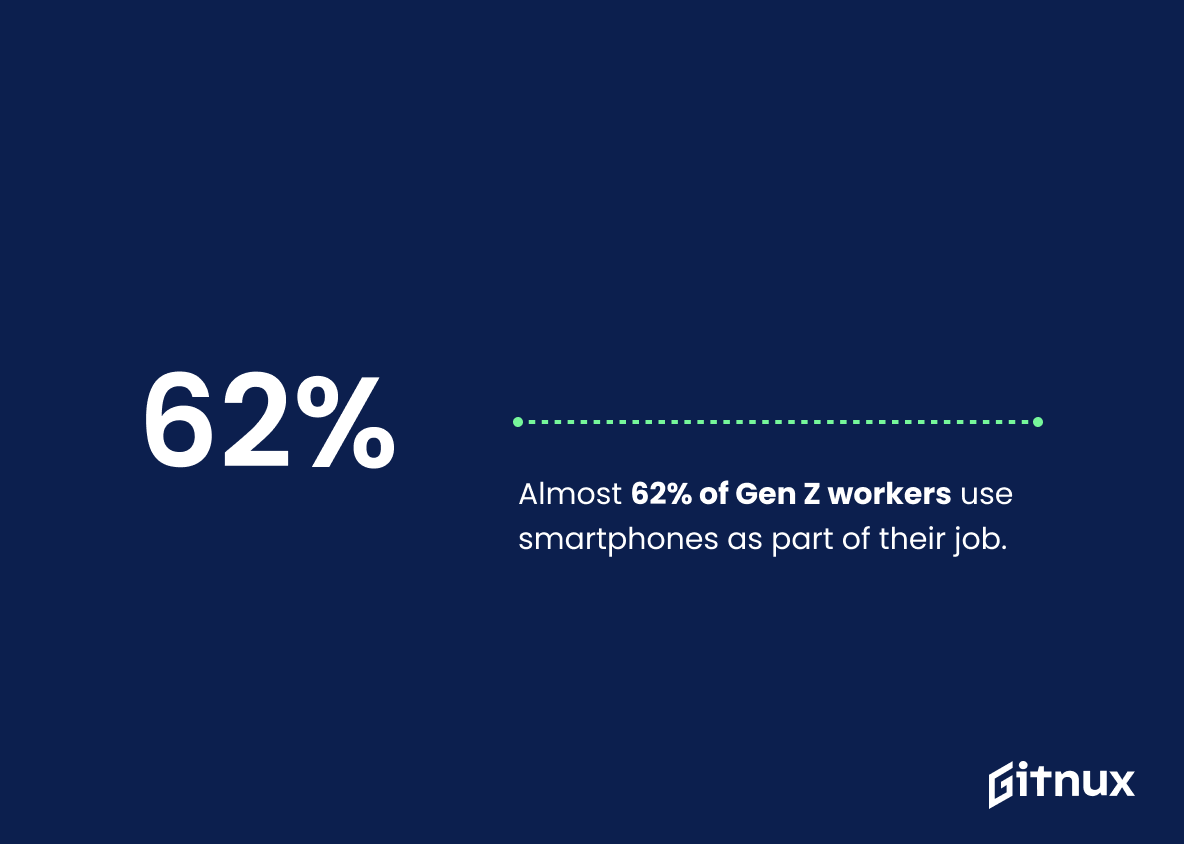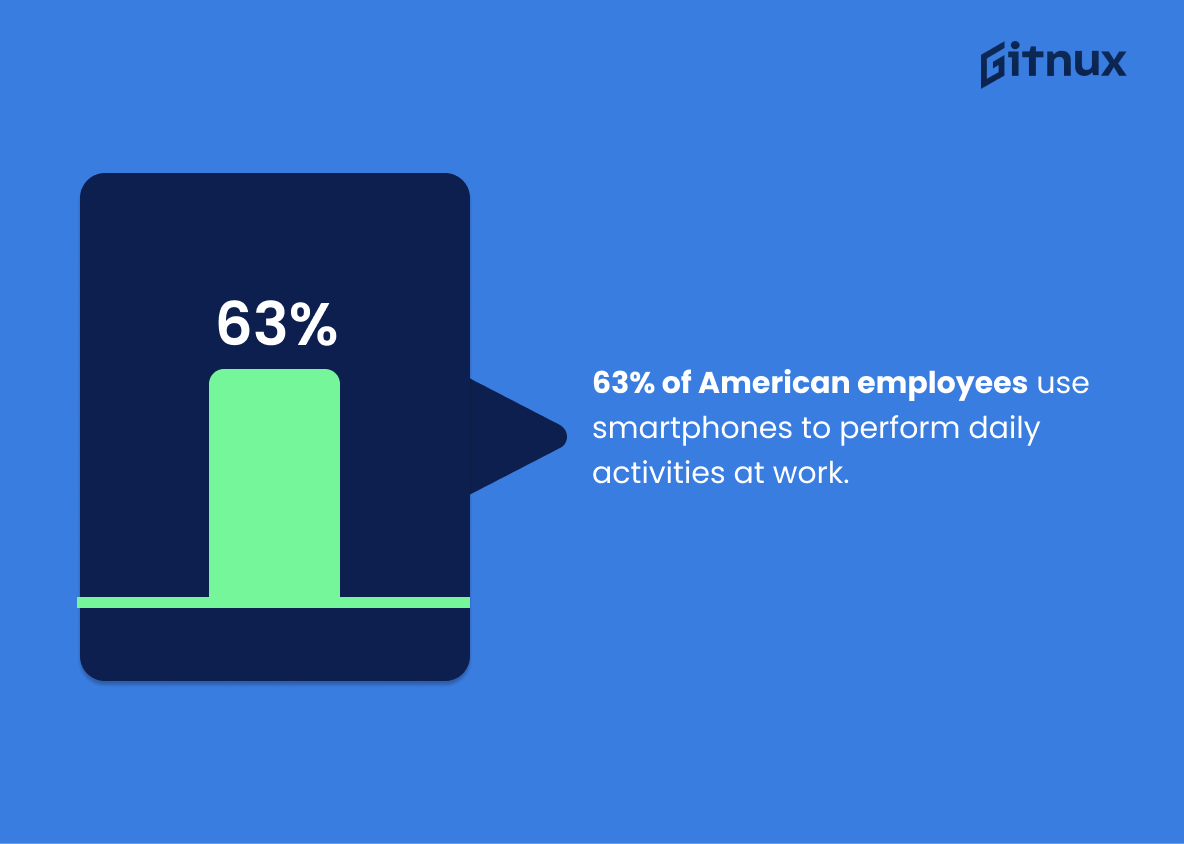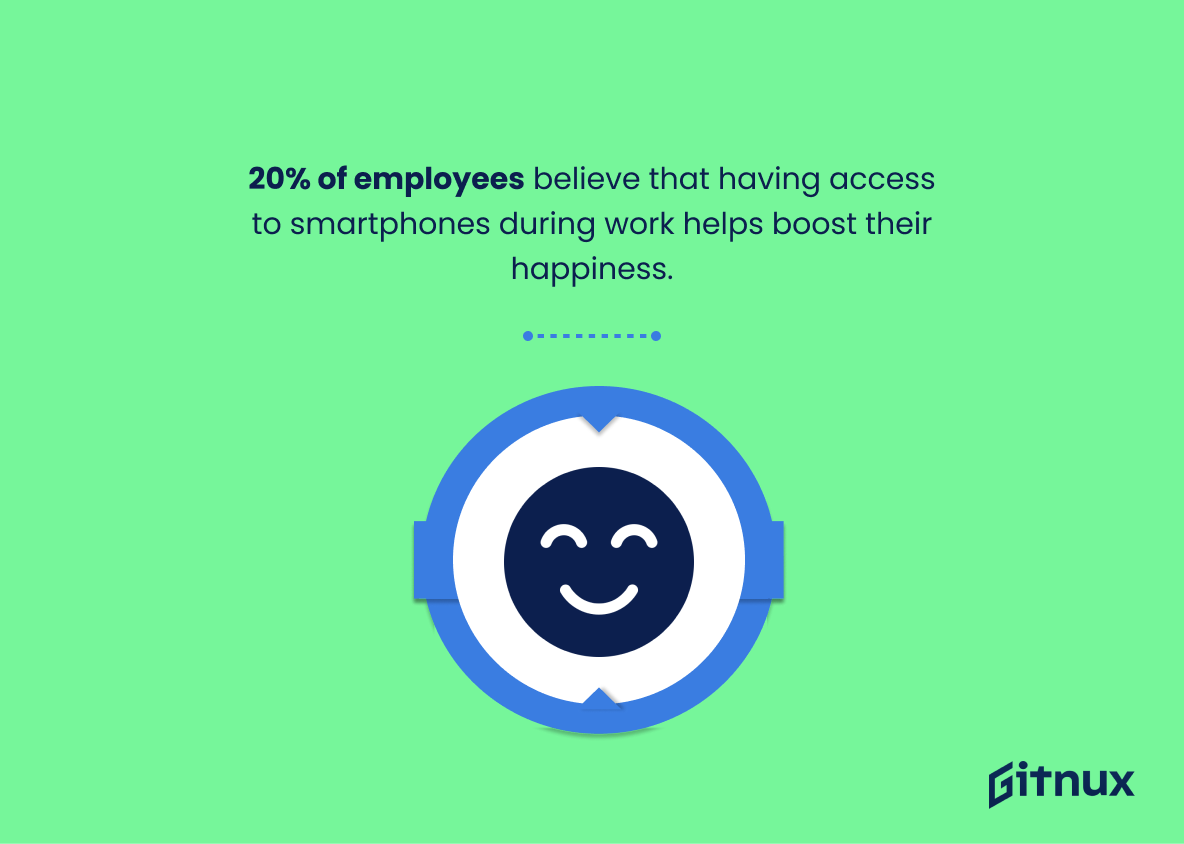Smartphones have become an integral part of our lives, and they are now being used in the workplace as well. With the rise of mobile technology, it’s no surprise that the use of smartphones in the workplace is becoming increasingly popular. But what does the data say about the use of smartphones in the workplace?
In this blog post, we will take a look at some of the latest smartphone in the workplace statistics and explore how businesses are using mobile technology to their advantage. We will also discuss the potential risks and benefits of allowing employees to use their personal devices for work purposes. So, let’s dive in and take a closer look at the data.
Smartphone In The Workplace: The Most Important Statistics
On average, employees waste more than 2 hours per day using their phones at work.
The average employee spends almost 8 hours per workweek on their cell phone doing non-work-related activities.
Smartphone In The Workplace: Statistics Overview
55% of employees say personal messaging is the top reason they use their cell phones at work.
Organizations should create policies and procedures around the use of personal messaging on cell phones in the workplace, in order to ensure that employees are using their phones for work-related purposes and not for personal purposes. They should also consider implementing tools and technologies that allow employees to stay connected while keeping work and personal conversations separate.
Highly mobile employees spend an average of 33% of their workdays on their cell phones.
Employees are increasingly relying on their phones for work-related activities, and mobile devices are becoming an integral part of the work experience. This could have implications for employers, who need to ensure that their employees are using their smartphones responsibly and efficiently, and that the security of any sensitive data is not compromised.
The average employee spends almost 8 hours per workweek on their cell phones doing non-work-related activities.
This statistic highlights the possibility for employees to waste time on their smartphones while at work. It also highlights the need to create policies that can help to discourage non-work related activities on cell phones while in the workplace. Such policies should address issues such as the use of social media, personal calls and texts, and other activities that could lead to decreased productivity.
55% of employees would rather use their own cell phone for work than a desk phone.
Many employees prefer to use their own devices for work-related tasks, indicating that organizations should consider providing more support for employees who choose to use their own devices for work. This could include policies for data security and backup, as well as guidance on using the device for work tasks. Additionally, employers may need to invest in mobile device management software and other security measures in order to protect company data from potential threats.
If employees use their cell phones for work, the likelihood of losing those devices goes up, along with the company’s risk of data breaches. 39% of surveyed organizations said they experienced a data security breach due to lost or stolen devices.
This information demonstrates the potential risks associated with allowing employees to use their personal devices for work. Companies need to be aware of the potential security risks and take appropriate measures to protect their data. Companies should consider implementing security measures such as device encryption, remote wiping, and two-factor authentication to protect their data from falling into the wrong hands if their devices are lost or stolen.
Smartphones can promote autonomy, relationships, and knowledge sharing, leading to job satisfaction and work efficiency.
It highlights the potential benefits of using smartphones in the workplace. By promoting autonomy, relationships, and knowledge sharing, smartphones can lead to increased job satisfaction and work efficiency, which can be beneficial for both employers and employees.
55% of survey respondents say smartphones represent the most vulnerable endpoint at their organization.
This statistic emphasizes the need to prioritize mobile security in the workplace. Smartphones are the most used and accessible endpoint for employees, and they represent a major security risk if not properly protected. It is essential for organizations to maintain strong security protocols and regularly update their mobile devices to protect their data and networks from malicious actors.
Smartphone use in the workplace has been linked to decreased productivity, stress, and addiction.
Employers should be aware of the potential risks of allowing their employees to use Smartphones at work. This can help employers create policies to mitigate the risks and ensure that employees are using their Smartphones responsibly and not allowing their usage to negatively impact their productivity.
Check out our latest Cell Phone Distraction At Work Statistics
One study showed that private smartphone use at work is associated with the subjective experience of being interrupted, and this effect is stronger when the use is negatively evaluated.
Private smartphone use can be disruptive to workplace productivity and negatively affect employees’ experiences. This highlights the importance of setting clear boundaries and expectations around smartphone use in the workplace.
On average, employees waste more than 2 hours per day using their phones at work.
Employees are not using their time efficiently in the workplace. It highlights the potential for a decrease in productivity due to the use of smartphones. This could have a negative impact on the overall performance of the company.
Men check email more on their cell phones, while women browse social networks more.
This statistic shows the different ways that men and women use their smartphones. This information can be used to inform employers about how to best reach their employees and how to design policies that are effective for both genders.
Smartphone use in the workplace increases productivity by 34%.
Smartphone use in the workplace can be beneficial for both employers and employees. It increases productivity, which can lead to increased profits for employers, and it also gives employees more time to spend on personal activities. This could lead to improved morale and job satisfaction, which can help to create a better work environment.
60% of employees feel they have a better work-life balance due to smartphones.
Employees are able to better manage their work and personal lives due to the convenience and flexibility that smartphones provide. This is an important point to make in a blog post about Smartphone In The Workplace Statistics, as it demonstrates the potential benefits of using smartphones in the workplace.
93% of workers under 50 reported using their smartphones for work-related tasks.
The majority of workers under 50 are using their smartphones for work-related tasks, which suggests that smartphones are becoming an increasingly important tool for businesses. This statistic is important for employers to consider when evaluating their technology needs and for employees to consider when deciding which devices to use for work.
52% of all workers surveyed reported that their organizations provided smartphones for their use.
A majority of workers have access to smartphones, which can be used to increase productivity and efficiency. This statistic is important for employers to consider when deciding whether or not to provide smartphones to their employees. It also provides insight into the current trends in the workplace and how technology is being used to improve the workplace.
On average, employees have 4.4 productivity apps on their smartphones.
Employees are taking advantage of the technology available to them to increase their productivity. This is an important point to make in a blog post about Smartphone In The Workplace Statistics, as it demonstrates the potential of smartphones to help employees be more efficient and effective in their work.
87% of businesses expect their employees to use personal devices for work purposes.
The majority of businesses are now expecting their employees to use their own devices for work purposes, demonstrating the importance of smartphones in the modern workplace. This statistic is a powerful reminder of the need for businesses to ensure that their employees are equipped with the right tools to do their job effectively.
Almost 62% of Gen Z workers use smartphones as part of their job.
A majority of Gen Z workers are relying on their smartphones to get their job done, demonstrating the importance of mobile technology in the modern workplace. This statistic is a valuable insight into the changing nature of work and how technology is impacting the way we work.
63% of American employees use smartphones to perform daily activities at work.
The majority of American employees are relying on their smartphones to get their work done, demonstrating the importance of these devices in the modern workplace. This statistic is an important piece of evidence for any blog post about smartphone in the workplace statistics, as it provides a clear picture of the current state of affairs.
25% of employees utilize smartphones for e-learning and training purposes.
This demonstrates the prevalence of smartphones in the workplace. It shows that a quarter of employees are taking advantage of the technology to access e-learning and training opportunities, indicating that smartphones are becoming an increasingly important tool for professional development.
52% of companies actively encourage employees to use smartphones for work-related tasks.
A majority of companies are recognizing the potential of smartphones to improve productivity and efficiency in the workplace. This statistic is a valuable insight for readers of the blog post, as it provides a snapshot of the current state of the workplace and how companies are adapting to the changing technological landscape.
20% of employees believe that having access to smartphones during work helps boost their happiness.
A significant portion of employees view smartphones as a positive addition to their work environment. It suggests that having access to smartphones can help to increase employee satisfaction and morale, which can lead to improved productivity and job satisfaction. This statistic can be used to support the argument that allowing employees to use smartphones in the workplace can be beneficial for both the employer and the employee.
Conclusion
In conclusion, the use of smartphones in the workplace is becoming increasingly common. Smartphones offer a range of benefits to businesses, including increased productivity, better communication, and improved customer service. However, there are also potential risks associated with the use of smartphones in the workplace, such as security concerns and potential distractions.
It is important for businesses to consider the pros and cons of using smartphones in the workplace and develop policies and procedures to ensure that the use of these devices is managed responsibly.
References
1 – https://www.iacis.org/iis/2021/1_iis_2021_227-235.pdf
2 – https://core.ac.uk/download/pdf/148358314.pdf
3 – https://www.sciencedirect.com/science/article/pii/S074756322030282X
4 – https://www.dialpad.com/blog/how-to-safely-allow-employees-to-use-their-personal-cell-phones/
5 – https://www.businessnewsdaily.com/10102-mobile-device-employee-distraction.html
6 – https://press.roberthalf.com/2017-07-19-WORKING-HARD-OR-HARDLY-WORKING-Employees-Waste-More-Than-One-Day-a-Week-on-Non-Work-Activities
7 – https://insights.samsung.com/2016/08/03/employees-say-smartphones-boost-productivity-by-34-percent-frost-sullivan-research/
8 – https://www.zippia.com/advice/cell-phones-at-work-statistics/
9 – https://www.perillon.com/blog/mobile-statistics-devices-at-work
10 – https://www.genuent.com
11 – https://www.xerox.com
12 – https://www.samsung.com
13 – https://www2.deloitte.com
14 – https://www.pewresearch.org
15 – https://www.statista.com
16 – https://observatory.tec.mx
17 – https://www.allyo.com
18 – https://www.citrix.com
ZipDo, cited June 2023: Smartphone In The Workplace Statistics

